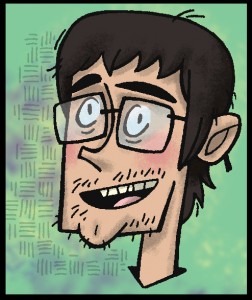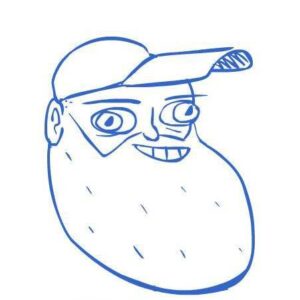 I’m often asked by artists to judge whether the work they are doing is worth the money they are being paid by a studio. It’s a tough question, as every studio I’ve ever worked for or heard of has paid their crews different amounts for work, and in very dissimilar ways. Some studios pay by the piece, or by the second, or by the linear foot, or on a weekly salary, or on quota systems etc. etc. A lot of studios split the workloads in odd ways, splitting scenes amongst a number of artists where some studios rely more on artists that can apply multiple skills to the same scene. With all of these variations in mind it’s often hard to calculate the average pay for specific jobs in the industry.
I’m often asked by artists to judge whether the work they are doing is worth the money they are being paid by a studio. It’s a tough question, as every studio I’ve ever worked for or heard of has paid their crews different amounts for work, and in very dissimilar ways. Some studios pay by the piece, or by the second, or by the linear foot, or on a weekly salary, or on quota systems etc. etc. A lot of studios split the workloads in odd ways, splitting scenes amongst a number of artists where some studios rely more on artists that can apply multiple skills to the same scene. With all of these variations in mind it’s often hard to calculate the average pay for specific jobs in the industry.
Instead of salary and price per piece I would like to mainly focus on the ‘Value’ of the artist, and to demonstrate just how much the industry economics have changed that value in my short career. I can only speak from personal experience but over the past 14 years I’ve seen a precipitous drop in salaries and price point through all departments I’ve worked in. A few examples: when I began my career, a scene of completed BG Layout would fetch $35 (background only, no posing) whereas now I find it hard to get $20 for the same job. My first job layout supervising on Little Bear saw me make $1300 a week for 11minutes of episodic supervision with no scene quota built into that price. Now, I often see Layout supervision at $800-$900 a week for 22minutes of episodic supervision and an expectation that the supervisor will also contribute almost as many completed scenes as an artist on the crew.
In most cases the studio or producer expects the quality of the deliverable to remain essentially the same as it used to be. A 50{f2e86ea6af82e2bb048871abf045622abf0ed27fb513932dc1ee8c05a54cbefd} drop in price coupled with a doubling of schedule cannot possibly lead to an equal degree of quality for a job. Often the artist tries hard to deliver to this expectation, we all want to be proud of our work, but something has to give and the overall quality of the department drops as things get missed, opportunities for betterment are lost, and tired artists succumb to burn out.
I don’t blame anyone specifically for this current devaluation, the economics of the TV industry have pressured the broadcasters, in turn squeezing the producers, and ultimately the grunts into tighter boxes for less cash. Overseas studios have played their part in driving down the price while ramping up the deliverables, while domestic studios are often forced to underbid and understaff just to eke out a small margin on whatever projects they are lucky enough to land.
The real (and often unspoken) tragedy in all of this is that the artist is the one who is left devalued in the end. They realize they are working more and more for less and less. They are aware that there are many talented artists clamoring for their job if they should leave it, and they are aware that there are many suitable artists who would do their job for even less money. It’s psychologically difficult to keep your confidence under those circumstances, to feel wanted or needed. This is a shame, for most artists in this field are highly specialized. Most animation artists are the elite, they have spent the bulk of their lives drawing even before they realize they want to pursue an art career.
Who devalues us?
Well, we do. We don’t stick together very well, we don’t communicate to each other in an attempt to form any solidarity, and few of us were mentored by a senior artist who can instill in us our true worth and our responsibility to the industry as a whole.
I will leave you with a favorite story of mine… I’m not sure if it’s true.
Legend has it that Pablo Picasso was sketching in the park when a woman approached him. She tentatively asked Picasso if he could sketch her. Picasso agreed, and after studying her for a second, he drew an effortless pencil stroke to create her portrait. The woman loved it, and offered to pay him for his art, at which time Picasso requested $5000.00. The woman was shocked and said, “How could you want so much money for this picture? It only took you a second to draw it!” To which Picasso responded, “Madame, it took me my entire life.”
Truer words… ~M
My Studio http://www.invisibleentertainment.ca/






Good read Mark. I might add that technology and globalization has been a big game-changer for this industry and so many others as so many skills have been mechanized, digitized, etc.
And if you can get a person somewhere to run the software for cheap…
Top this off with illegal downloading that is cutting into industry profits and we have what happened to the music business with napster all over again.
Who wants to put up millions of dollars to produce something if it’s going to be downloaded and shared for free? Or if you know a percentage is being pirated then you’ll have to find a way to get it produced cheaper to make sure you can pay back the lenders.
If you have friends downloading for free they are also lowering your wage and value in the equation.
~ but that might be another story
thx again
Interesting. Also enjoyed the Picasso tale. I think you are implying that artists should form unions. .. But I think that would just lead to the job market being completely driven overseas. I guess we just have to face the new global market. . which equalizes standard of living across the world, to the detriment of richer nations.
As someone who has worked in animation both in CHina and Canada, I can back up what Lance Lefort said. .. China has uncontrolled piracy of everything. . and most animation companies rely 90% on foreign market animation work.. because they can not make any money in the domestic CHinese market, despite 1 billion person audience, because of piracy and government censorship.
But around the world, more and more people are studying animation now. . it is no longer a niche market.. There are more artists than jobs. Forming unions is not going to change that reality.. . I guess the best we can hope for is that people keep demanding higher quality and that less people enter into the animation field. . (which may well happen as CG animation loses it reputation for being a secure and profitable career that it had in the 90’s).
Hi Daniel!
I’ve never been very good at ‘implying’ anything, I’m more of a blunt object when it comes to what I’m trying to say. I am certainly not suggesting a union. Like you, I don’t think a union would actually work for us at all, and I personally would not support the formation of a union. I don’t think we have to go that far, I just think it would be beneficial to us all if we worked together towards the goal of fostering a strong and communicative animation community. Thanks for the comment!
Hey Mark,
OK I had drawn the wrong conclusion then. Of course I agree with you on fostering a strong and communicative animation community and with that a general concensus about what rates are reasonable to charge, what salaries are reasonable, latest techniques,how to navigate contracts and legal documents etc. . That’s why websites like this one and AWN, and T.A.I.S. (in Toronto) are great!